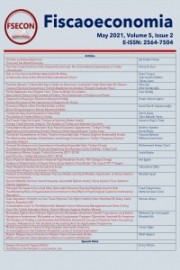Endogenous Money Supply: Turkish Economy (2011-2018)
Endogenous Money Supply: Turkish Economy (2011-2018)
Author(s): Leyla BaştavSubject(s): Economy, National Economy, Present Times (2010 - today), Financial Markets
Published by: Ahmet Arif Eren
Keywords: Post Keynesian Economics; Endogenous Money; Johansen Cointegration Test; VECM; Toda Yamamoto;
Summary/Abstract: There are two answers to the question of how money is created: according to the exogenous money hypothesis central banks have full control over the money stock in the markets and other policy instruments; whereas endogenous money theory stipulates money is created by credit demand of economic actors. Demand for credits in turn emanates from the production process of firms, triggered by changes in the production costs, basicly by a rise in nominal wages. This paper aims to analyze whether money supply creation is endogenous in Turkish money markets during the period 2011-2018 by monthly data, for which cointegration between money supply (money base, M1, M2) and credits is tested by Johansen method and VECM is estimated for specifying direction of causality between the variables. As a robustness check of the causality obtained from VECM long and short run analysis, cpi inflation is added to the model and a four variate Toda Yamamoto VAR is estimated. Results point at causality from credits to money supply and that credits extended by banks form basis of the money supply.
Journal: Fiscaoeconomia
- Issue Year: 5/2021
- Issue No: 2
- Page Range: 595-640
- Page Count: 16
- Language: English

